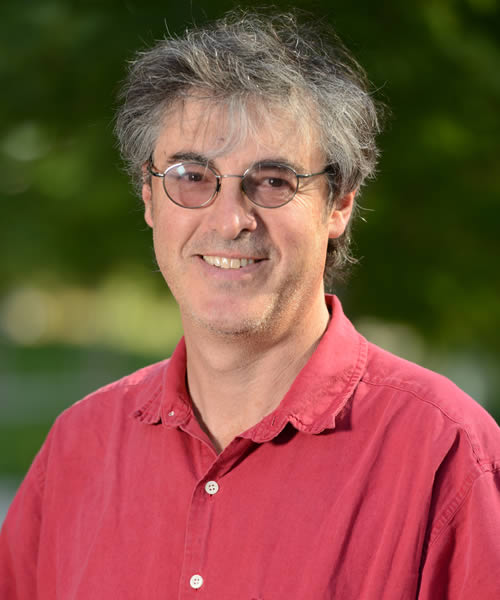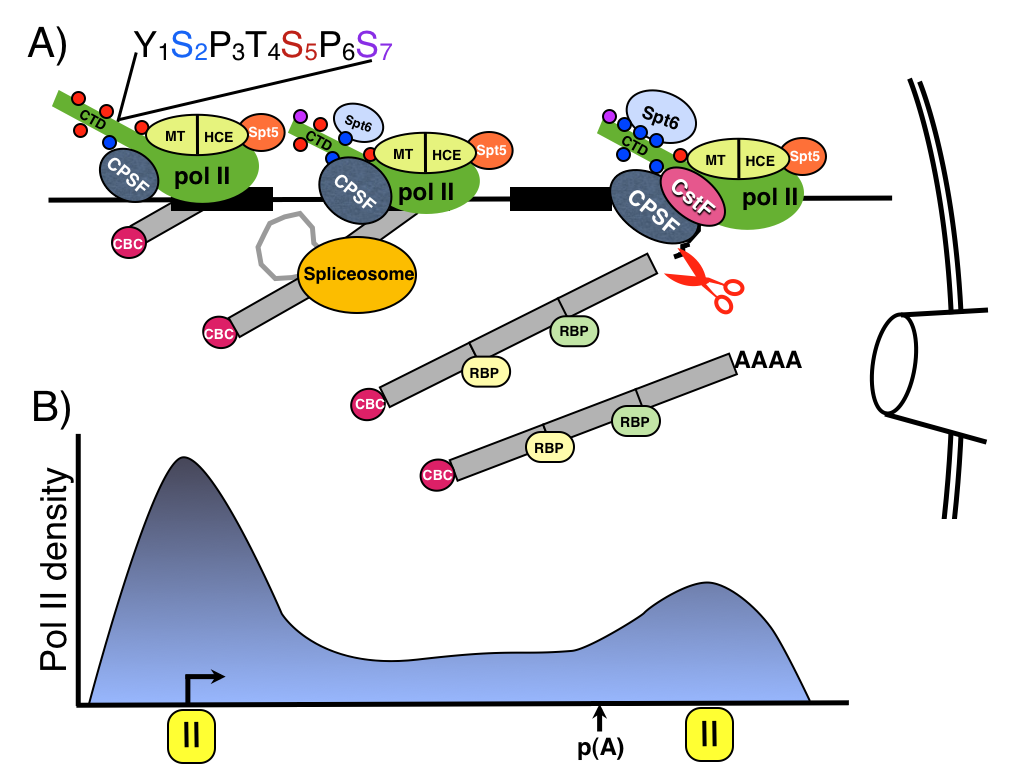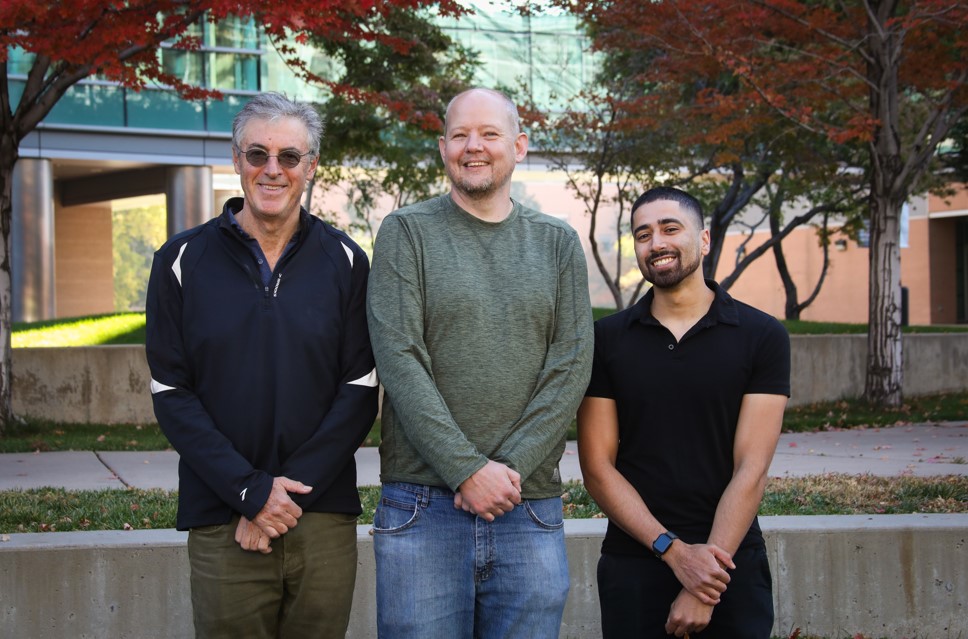David Bentley, PhD
Professor

Education
PhD, Cambridge University
Contact Information
Phone: (303) 724-3238
Fax: (303) 724-3215
E-mail: [email protected]
Our research asks how the RNA polymerase II transcriptional machinery and RNA processing factors work together to achieve coordinated synthesis and maturation of messenger RNA (mRNA). The coupling of transcription and processing to make mRNA’s accurately and efficiently is essential to the health of all cells and is corrupted in many diseases. To make a fully functional mRNA requires synthesis of a primary transcript by RNA polymerase II and maturation of the transcript by capping the 5’ end, removal of introns by splicing and adding a poly A tail at the 3’ end. A mature mRNA is "gift-wrapped" with binding proteins that direct its export from nucleus to cytoplasm. A center-piece of the molecular machinery that couples synthesis with processing and export of mRNA’s is the C-terminal domain or CTD, a signature feature of the largest subunit of RNA polymerase II. If this domain is removed, transcripts lose their identity as mRNA precursors. Many of the projects in our lab test the mRNA is made within a factory complex that comprises RNA polymerase II together with mRNA processing factors that bind to the CTD "landing pad".
Because mRNA synthesis is profoundly misregulated in cancer cells, we are investigating the integration of transcription and pre-mRNA processing in normal and transformed cells. The strategies we use to tackle this problem include genetic manipulation of yeast and human cells, protein-protein interaction, chromatin immunoprecipitation and genome-wide localization of transcription and mRNA processing proteins by ChIP-Chip and ChIP-Seq next-gen sequencing methods.

Figure: Pre-mRNA processing factors and elongation factors associate with the human RNA polymerase II (pol II) transcription elongation complex
A). The conserved heptad repeat sequence of the pol II C-terminal domain (CTD) is dynamically phosphorylated and dephosphorylated on Serines 2, 5 and 7 during the transcription cycle. Human capping enzyme (HCE), cap methyltransferase (MT), the cleavage polyadenylation factors, CPSF, and CstF and the elongation factors Spt5 and Spt6 are shown. We work on how phosphorylation of RNA polymerase II CTD controls the coupling of transcription elongation and termination with co-transcriptional processing of the pre-mRNA.
B). 5’-3’ distribution of RNA pol II density on a typical human gene showing pausing at the start site and downstream of the poly (A) site. We work on how transcriptional pausing and elongation is de-regulated in cancer cells.
Current research projects in our lab
- How does co-transcriptional mRNA processing in cancer cells differ from normal cells?
- How does the rate of transcription affect co-transcriptional mRNA processing?
- How is pre-mRNA processing controlled by phosphorylation of the RNA polymerase II C-terminal domain?
- How does chromatin structure and histone modification affect co-transcriptional pre-mRNA processing?
- How does phosphorylation of the RNA polymerase II C-terminal domain affect transcription elongation and termination?
- How is the chromatin structure of specific genes controlled by targeted histone demethylation?
- How are pre-mRNA processing factors localized genome-wide in normal and breast cancer cells?
ROTATION STUDENTS ARE WELCOME.

| Photo | First Name | Last Name | Job Title | |
 | Ben | Erickson | Senior Professional Research Assistant | [email protected] |
 | Nova | Fong | Senior Professional Research Assistant | [email protected] |
.jpg?sfvrsn=da4ac6b4_0&MaxWidth=120&MaxHeight=160&ScaleUp=false&Quality=High&Method=ResizeFitToAreaArguments&Signature=A3DC93EBF0B62086E76036E0347B05F1D91C2725) | Usman | Hyder | Postdoctoral Scholar | [email protected] |